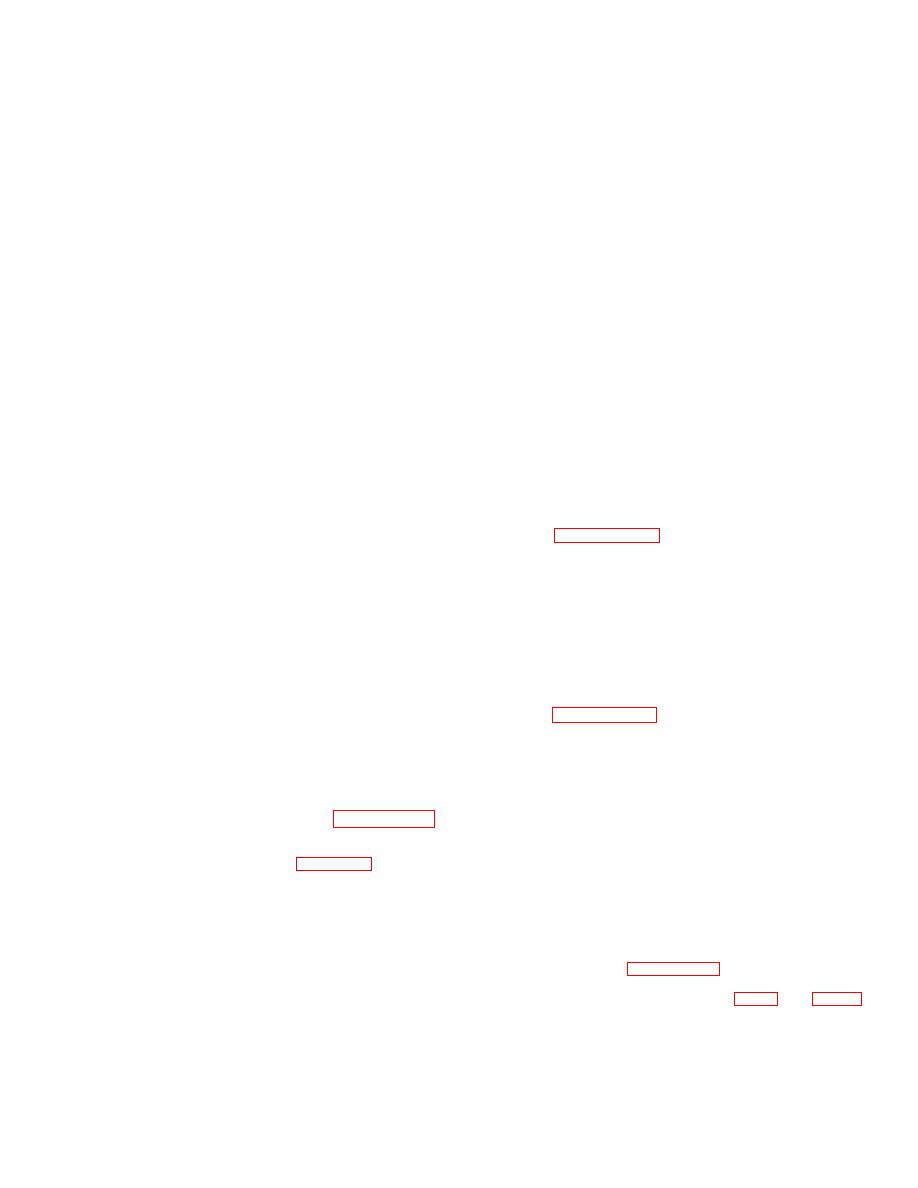 |
|||
|
|
|||
|
|
|||
| ||||||||||
|
|  TO 31R2-2GRC171-2
TM 11-5820-815-14
NAVELEX 0967-LP-544-5010
4-173. Detector. The detector circuit functions as a
about +0.29 volt for minimum setting of squelch
peak detector to reduce compression amplifier gain
potentiometer A10A1R4 (maximum squelch sensitivity)
whenever negative audio peaks at the output of amplifier
to about +1.35 volts for maximum setting of A10A1R4
U5A try to exceed the detector threshold (approximately -
(minimum squelch sensitivity). For no rf input signal or
2.24 volts). Resistor R74 of voltage divider R75-R74
for rf input signals below squelch threshold, the absolute
sets the detector threshold by developing a bias voltage
value of the negative AGC voltage is less than the
of about +1.54 V dc that reverse biases transistor Q13.
positive squelch reference bias. This results in a positive
With Q13 off, -12-V dc power supply voltage applied
voltage at the summing point of R79 and R80 and, thus,
through resistor R76 charges capacitor C36 to about -12
a negative output voltage from U5B (approximately -10
V dc to turn FET Q11 completely off. When audio is
Vdc). This forward biases squelch gate Q12 to turn it on.
applied to the compression amplifier, output audio from
When on, Q12 shunts receive audio to ground to mute
U5A appears at the base of transistor Q13
the receiver output. When the rf input signal exceeds
superimposed on the bias voltage.
When negative
the squelch reference, the voltage applied to U5B goes
audio peaks exceed about -2.24 volts, the voltage
negative. This causes the output of U5B to go positive
applied to the base of Q13 exceeds the bias voltage plus
(approximately +10 V dc) to reverse bias Q12 and
base-to-emitter junction voltage of Q13. This brings Q13
unmute the receive audio. To prevent random muting of
into conduction to allow capacitor C36 to discharge
the receiver when the rf input is right at squelch
through resistor R117 for the length of time Q13 is turned
threshold, resistors R84 and R85 form a positive
on. The ratio of on time to off time determines the
feedback path around U5B to provide about 20 millivolts
average negative voltage developed across C36. This
of hysteresis to the input signal.
voltage, when applied to the variable attenuator (gate of
Q11), controls the compression amplifier gain to
4.176. A ground on the squelch on/off line disables the
maintain negative peaks at the output of amplifier U5A at
squelch circuit by grounding the base of squelch gate
about -2.24 volts. Through this circuit action, the audio
Q12. Thus unmutes the receive audio independently of
output of the compression is held at about 1.6 V rms
the output of squelch control U5B.
over the range of the variable attenuator which is
approximately 25 dB. Diodes CR10 and CR11 clip
4-177. HIGH-PASS FILTER (U6A). The high-pass filter
positive peaks that exceed approximately 3 volts.
(U6A of figure FO-21) shapes the low-frequency
Capacitor C72, resistor R121, and diode CR14 comprise
response of the output signal from the receive audio
an averaging detector which reduces the reverse-bias
compression amplifier. The high-pass filter is a 3-pole,
voltage on Q13 when receiving a high peak-to-average
active filter with unity gain and cutoff frequency of 300
receive audio signal. This regulates the compression
Hz. The three poles are determined by resistor-capacity
amplifier output and compensates for average power
networks R86-C39, R88-C40, and R87-C41. In the
output changes that would occur between high peak-to-
passband, the output varies less than +1 or -2 dB when
average and low peak-to-average receive audio signals.
referenced to the output at 1000 Hz. In the stopband,
the output is down more than -10 dB at 10 kHz.
4-174. Resistors R117 and R76 and capacitor C36
determine the attack and release time of the compres-
sion amplifier. When audio is first applied to the
4-178. LOW-PASS FILTER (U6B). The low-pass filter
compression amplifier or the level of audio increases, the
(U6B of figure FO-21) shapes the high-frequency
fast discharge of capacitor C36 through resistor R117
response of the output signal from the compression
sets the attack time at about 4 milliseconds. When audio
amplifier that is passed through the high-pass filter
is removed or the level of audio decreases, the slow
(U6A). The low-pass filter is a 3-pole, active filter with
charge of C36 through R76 sets the release time at
unity gain and cutoff frequency of 3000 Hz. The three
about 150 milliseconds.
poles are determined by resistor-capacity networks R-
89-C43, R90-C45-C44, and R91-C46. In the passband,
4-175. SQUELCH CIRCUIT. Refer to figures FO-21
the output varies less than +1 or -2 dB when referenced
and 4-7. The squelch control (U5B) compares AGC
to the output at 1000 Hz. In the stopband, the output is
voltage to a squelch reference input voltage from the
down more than -10 dB at 10 kHz.
squelch potentiometer (A10A1R1 of figure 4-7) to mute
the receiver whenever the rf input signal to the receiver is
4-179. HEADSET VOLUME AND RECEIVE AUDIO
below squelch threshold as determined by the squelch
LEVEL CONTROLS. The output signal (audio to gain
potentiometer setting.
Summing network R79-R80
controls) from audio module A4 (A4P1-S/A10J13-S) is
compares negative AGC voltage (squelch sample) to the
fed to the headset volume control (VOL) and the receive
positive squelch reference bias developed across
audio level control (RCV AUDIO) located on the front
resistor R82 and applies the resulting sum to the
panel of the receiver-transmitter. The headset volume
inverting input of squelch control U5B.
Squelch
control (A10A1R1 of figure FO-15) allows adjustment of
reference bias developed across R82 of voltage divider
the audio level to the headset. The receive audio level
R82-R83-R81
varies
from
control
(A10A1R3
of
4-32
|
|
Privacy Statement - Press Release - Copyright Information. - Contact Us |